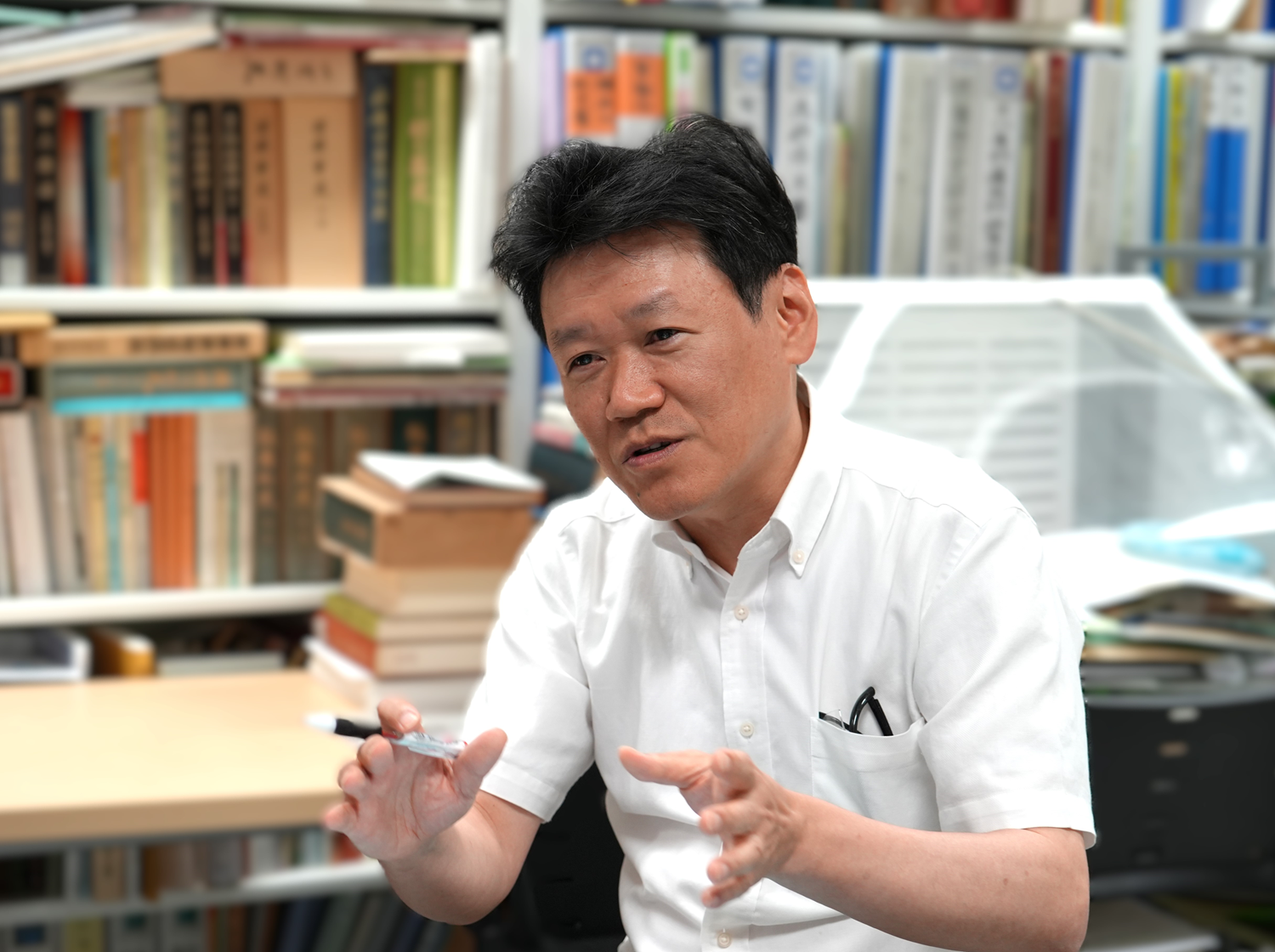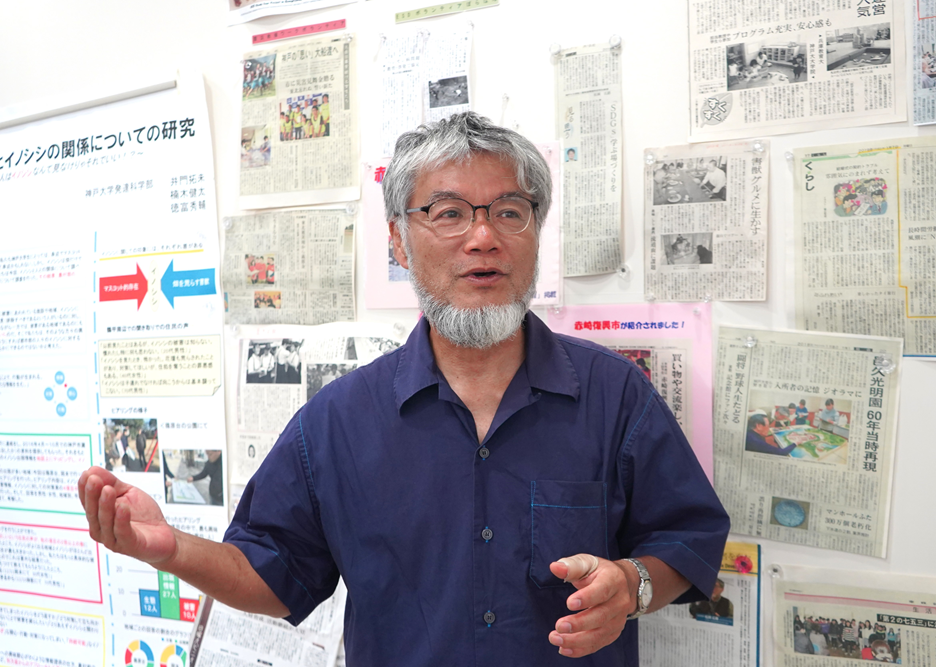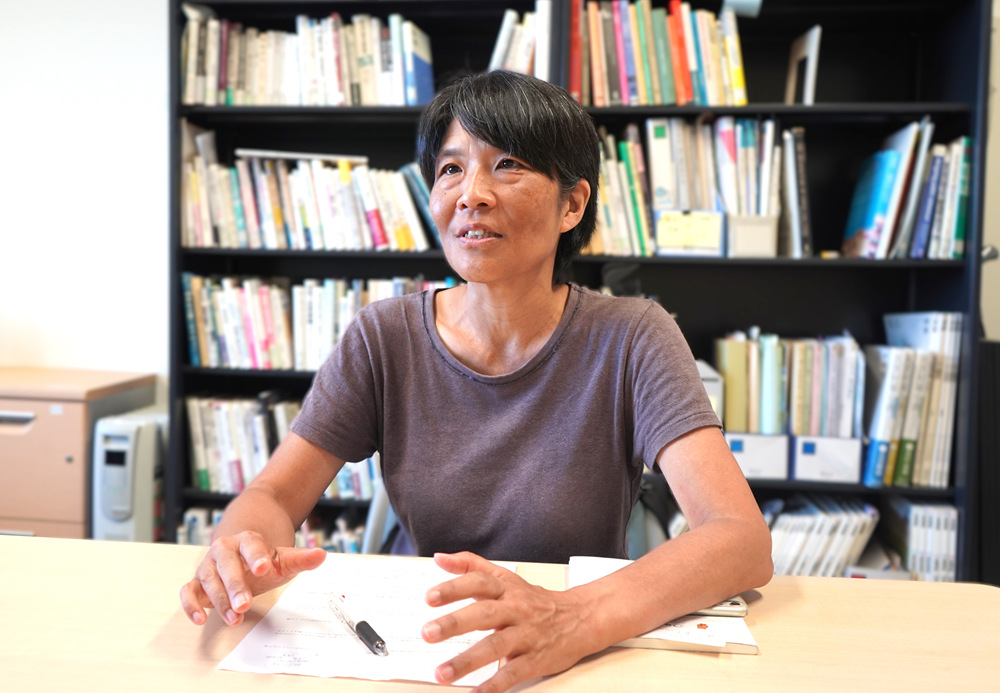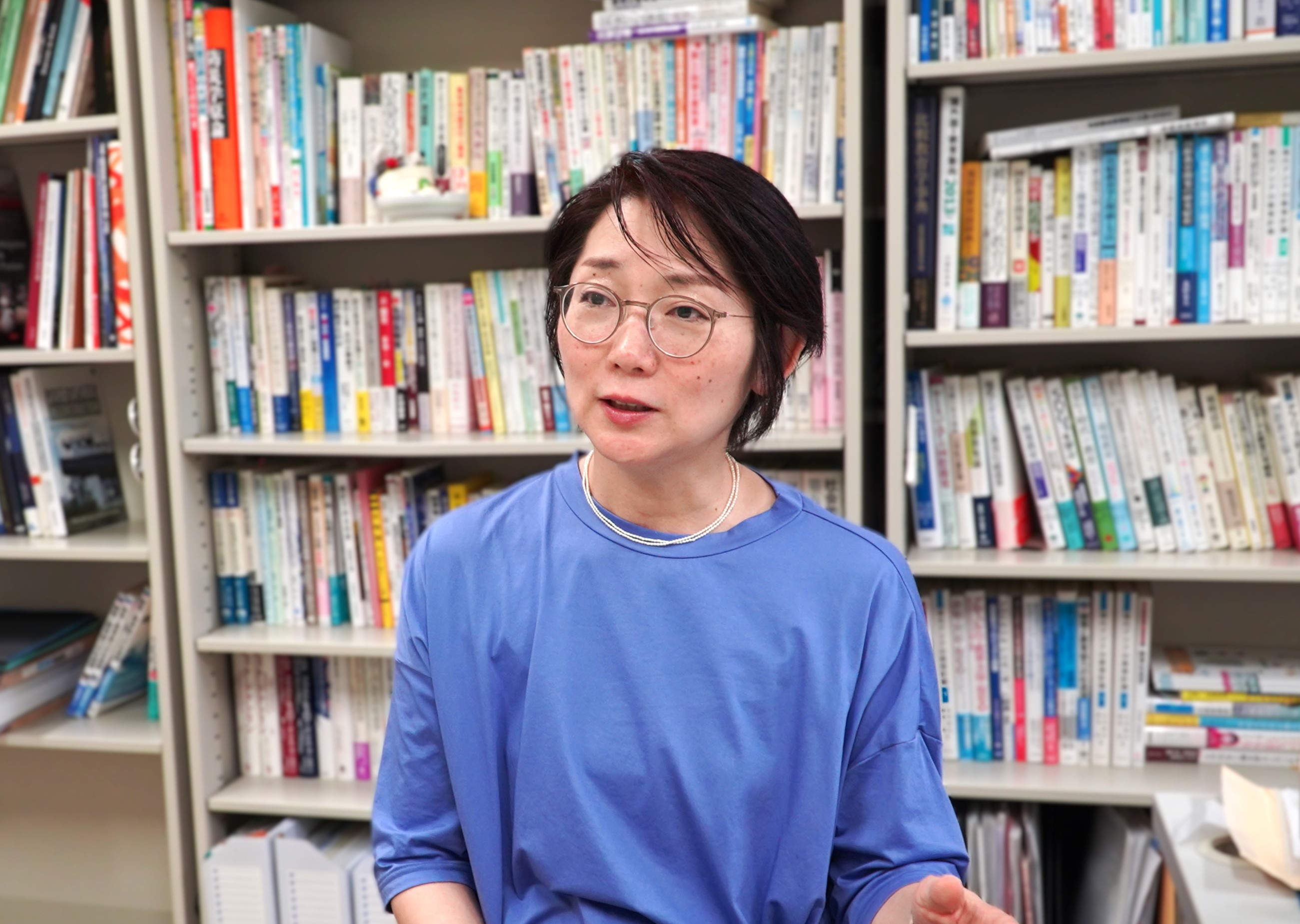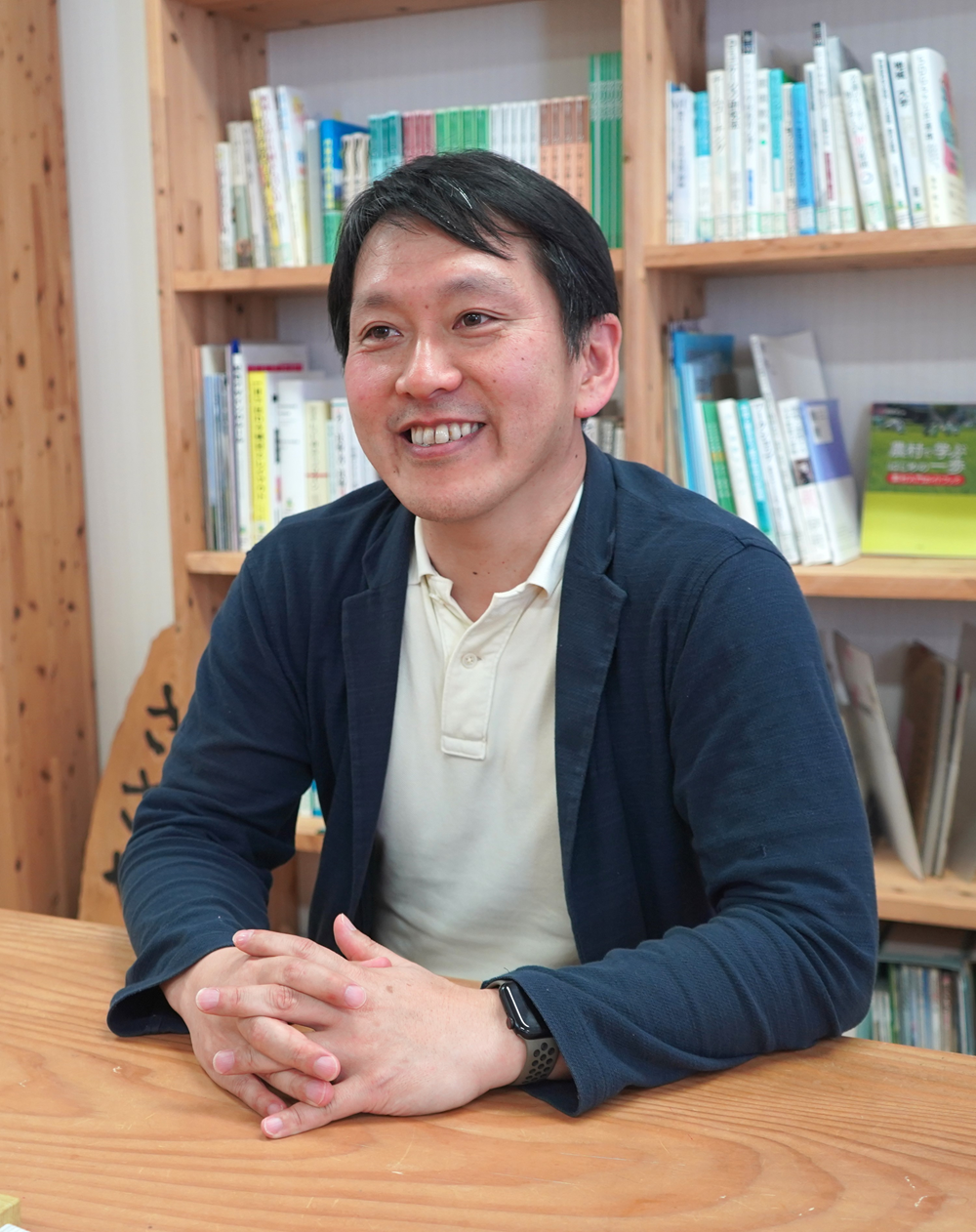
In the disaster-prone nation of Japan, rural areas are often struck with earthquakes and floods. Recovery efforts for rural areas affected by the Kumamoto Earthquake of 2016 and the Noto Peninsula Earthquake of 2024 presented different challenges than those found in recovery efforts for urban areas. As these areas are faced with rapidly declining and aging populations, how can progress be made in developing rural areas that are resilient to disaster? We asked farm and rural management studies expert NAKATSUKA Masaya, professor at the Kobe University’s Graduate School of Agricultural Science and director of its Center for Community Partnership, about the current state, challenges and future prospects of rural development.
What are key factors in developing rural areas that are resilient to disasters?
Nakatsuka:
From the perspective of my research focus, namely sustainable development of agriculture and rural areas, I’m of that opinion that, dare I say, we should not approach rural development with the specific objective of preparing for disasters. First and foremost, it’s important that we do what we need to do in our everyday lives and respond to the challenges that lie before us, and I feel that disaster response is just an extension of our daily lives. We cannot let these get out of order. Rather than sacrificing something in the name of disaster prevention, I feel that it would be better if our ability to respond to disasters was the result of the usual autonomous activities carried out in our communities.
In particular, in the hilly and mountainous regions, where challenges are already piled high, it would be difficult to apply already scarce resources just for a disaster that could come at any time. For instance, instead of preparing a toilet for use specifically during a disaster, I feel it would be better if the toilets that are used at gathering places every day were able to also be used during a disaster. I think we should also consider constructing small-scale, self-sufficient systems that automatically collect water and electricity for use during emergencies as a part of daily life.
Condensing village functions
Rural areas are now facing declining and aging populations, making it difficult for these villages to even exist. What’s the current state of affairs?
Nakatsuka:
There is an approach that considers “village functions,” which consist of three separate functions: “production complementation,” in which villagers help each other in their farming work, “mutual aid,” for maintaining villagers’ livelihoods, and “resource management,” which maintains the land, landscape and culture. In today’s rural areas, those village functions are gradually getting weaker. Population decline and an aging population are of course major factors, but other factors such as mechanization of agriculture, outsourcing of services, and individualization are all advancing, making it less necessary to rely on these village functions.
But is it possible to survive entirely without these village functions? Not really. These functions are necessary, no matter how small they may be. And even if there are no problems in villagers’ daily lives, they may require those functions in the event of a disaster. I think now it’s necessary to look at these functions in terms of how much we can condense them in a form that is adapted to the times.
How exactly should they be condensed?
Nakatsuka:
Let’s use festivals in rural areas as an example. Festivals are often held as religious events, but conversely, they can also be seen as training to improve the leadership of young people and residents, as events for women and men to meet and form marital relationships, and even as places for citizens to vent their frustrations. These multi-faceted festivals are built into the regions in which they’re held as a sort of social support device.
Now, even festivals are facing a threat to their very existence. If they are going to continue being held, they must be changed to fit the times while taking into consideration the various functions I just mentioned. A common mistake is emphasizing the festival’s form, which in turn sees a drop in the number of people looking to get involved. When reorganizing these festivals, it’s important to really think about why they’re even held in the first place.
We obviously don’t consider continuing these festivals because they’ll be useful during a disaster. But if continuing to hold these festivals as entertainment with diverse individuals involved will result in enhanced disaster management ability and resilience for the village, then that’s fine for what it is.
In addition, rather than having everyone in the village gather together, I think future regional development should take the form of lots of smaller, loosely connected groups. When disasters strike, generally it’s the people who interact on a daily basis that help each other just after the disaster, like neighbors and the parents of children’s friends. If we’re stuck on the framework of the past, future regional development is going to prove difficult.
Driven by citizens who make small, steady changes
How do you feel about leaders of regional development?
Nakatsuka:
When it comes to Japan’s rural villages, they’re not all run by the strong leadership of a single individual. Most villages have a group of followers around the leader who take small, steady actions little by little. This has created a framework in which leaders can be replaced by anyone in the village.
Not that I’ve necessarily demonstrated it, but even though a strong leader is important to regional development, I feel that having multiple people who want to make small improvements to the region makes for better continuity.
Even following a disaster, when the kind of people who take small steps forward have discussions regarding recovery, they seem to head in the direction of starting up communities. Without that sentiment, residents are simply living in the same region, but separately. And in places where one strong leader was pulling things along by themselves, the situation would become unstable if that leader were to disappear for whatever reason.
During the Great Hanshin Awaji Earthquake in 1995, there were lots of interactions between cities and farming communities, with the latter even sending support to Kobe. How do you feel about making use of those kinds of interactions?
Nakatsuka:
When the earthquake struck, I was still a student at Kobe University, and while I wasn’t yet involved in research at the time, the faculty members in my laboratory promoted "teikei" (a Japanese term referring to a system of producer-consumer partnership), in which consumers support producers of organic agriculture by buying their products. These types of everyday connections eventually led to farmers from the Tamba region in Hyogo Prefecture delivering food to Kobe during the disaster.
Over 10 years later, I provided support as a researcher in an exchange program between the Seitoku district of Nada Ward in Kobe City and the Jonan district of rural Tambasasayama City, both in Hyogo Prefecture. I emphasized the importance of everyday relationships in this program as well, which involved rice and vegetables from Tambasasayama being sent to Kobe and individuals from Kobe going to experience farming.
Agreements were signed in both districts for community development through cooperation between the city and farming community, which included a section related to mutual aid during disasters. However, this was positioned as something that just got tagged on at the end. Just signing an agreement doesn’t mean that mutual aid can automatically be carried out during a disaster; you need to build on those everyday exchanges to make it possible.
Solving issues in farming communities from the perspective of psychological capital
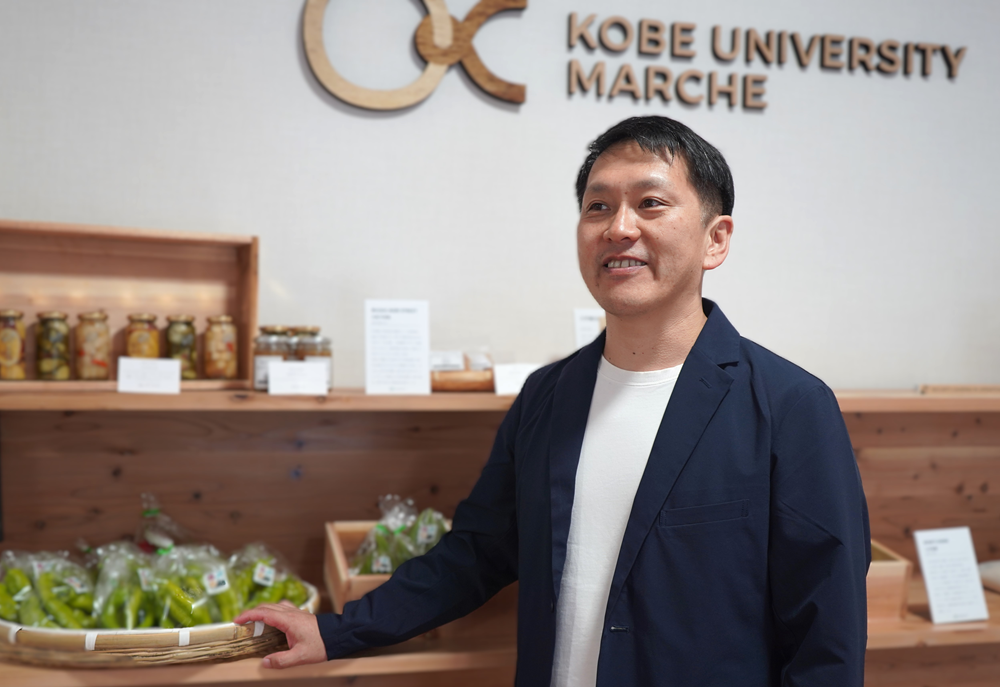
What measures should the Japanese government and its municipalities take?
Nakatsuka:
The Ministry of Land, Infrastructure, Transport and Tourism has a policy called “small hub development.” In order to sustain life in the villages of Japan, this policy puts functions necessary for life, like stores, hospitals, care facilities and gas stations, all in one place. This is much different from the concept of “compact cities,” in which cities are condensed into a more compact form with increased urban density.
After the Noto Earthquake in January 2024, there were some that thought that no one needed to live in the depopulated areas that were heavily damaged by the earthquake. However, if we take that opinion to the extreme, then that would mean that everyone should just live in Tokyo. What’s important is that villages support each other in protecting their residents’ livelihoods while continuing to retain their function for maintaining daily life.
While these small hubs serve as vital infrastructure for maintaining daily life, what’s also important here is that by preparing an environment that makes the lives of residents more convenient, the everyday use of these facilities can accumulate and eventually serve as effective disaster preparedness hubs during a disaster.
What is your current research focus?
Nakatsuka:
I’m currently engaging in research on psychological capital. This refers to an individual’s ability to overcome adversity and keep a positive attitude. In the field of business administration, there is research being conducted on the effects that workers’ psychological capital has on the organization as a whole, but I’m aware that this may also be important to community development in agricultural and rural areas.
As issues related to population decline pile up in rural areas, there are also a variety of spontaneous issues that can arise, not only natural disasters like heavy rain and typhoons, but also pest damage and wildlife damage. I’d like to explore the characteristics of villages that always act positively and can respond to the occasional disaster and engage in recovery efforts. I’m still developing a scale that can measure psychological capital through joint research with researchers who were activate on-site following disasters such as the Kumamoto Earthquake and Noto Peninsula Earthquake.
As far as disaster response goes, I’d like to first shine a light on the importance of psychological capital for administrators. During a disaster, there can be a discrepancy in response capacity depending on the ability of local government staff. In today’s highly uncertain society, I feel that approaches that consider rural areas and administrative organizations from the perspective of psychological capital will become important.
Resume
In 1996, graduated from the Faculty of Agriculture at Kobe University. After working at a consulting firm for parks and green spaces, finished the doctoral program at Kobe University’s Graduate School of Natural Sciences and earned his doctorate in 2004. Became associate professor at Kobe University’s Graduate School of Agricultural Science in 2012 and professor in 2021. Since April 2024, also serves as director of the Center for Community Partnership at Kobe University’s Graduate School of Agriculture and head of the Organizational Partnership Promotion Unit of the Office for Promoting Regional Partnerships.






